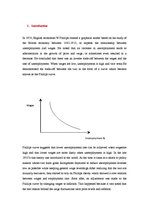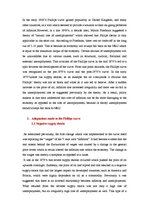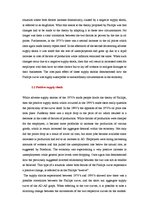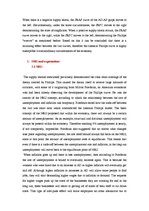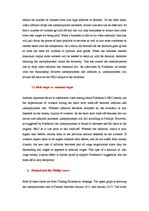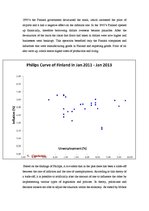| Nr. | Sadaļas nosaukums | Lpp. |
| 1. | Introduction | 1 |
| 2. | Adaptations made to the Phillips curve | 2 |
| 2.1. | Negative supply shocks | 2 |
| 2.2. | Positive supply shock | 3 |
| 3. | NRU and expectations | 4 |
| 3.1. | NRU | 4 |
| 3.2. | Real wages vs. nominal wages | 5 |
| 4. | Finland and the Phillips curve | 6 |
| 5. | Conclusion | 8 |
| 6. | References | 8 |
5. Conclusion
Based on the findings of Phillips, it is evident that in the past there has been a trade-off between the rate of inflation and the rate of unemployment. According to this theory of a trade-off, it is possible to artificially alter the amount of one to influence the other by implementing various types of legislation and policies. In theory, politicians and decision makers are able to adjust the situation within the economy. As stated by Milton Friedman and other critics of the Phillips curve, this trade-off is only temporary due to the susceptibility of the curve to unique influences, as an example the supply shocks between 1970’s and 1990’s. He also added that there exists a natural rate of unemployment which is unique to each economy based on the governmental policies. Any movement from this NRU will result in un-equilibrium within the economy, and this in return will force the unemployment rate to fall back to the original NRU unless permanent damage has been caused by the fluctuation. Whether inflation will also fall back to the previous figures depends on the money illusion of the workforce that can influence the permanency through wage negotiations.
…
Filipsa līkne / Phillips Curve Nairu While adverse supply shocks of the 1970’s made people doubt the theory of Phillips, then the positive supply shock which occurred in the 1990’s made them really question the practicality of the curve itself. In the 1990’s the opposite of the 1970’s oil price rise took place. Suddenly there was a major drop in the price of oil which resulted in a decrease in the costs of factors of production. While factors of production were cheaper for the employers, it became more profitable to increase the production of various goods, which in return increased the aggregate demand within the economy.



